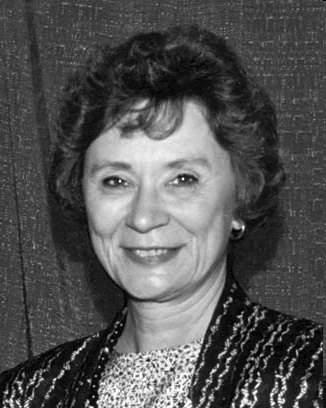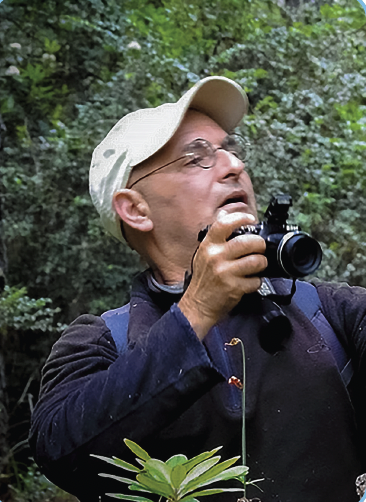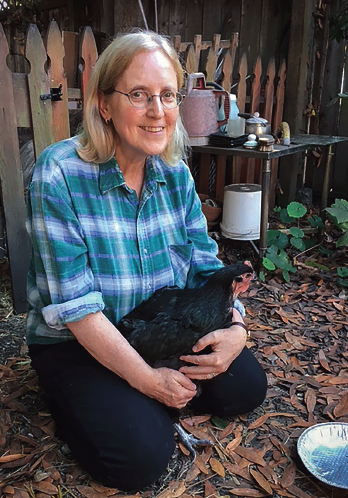
About Jean Auer
Jean Auer, born in Youngstown, Ohio, played a prominent role in California’s water issues for over thirty years. She first learned about water issues with the League of Women Voters and was appointed to the Central Coast Regional Water Quality Control Board. When her family moved to San Francisco she was appointed to the San Francisco Bay Regional Water Quality Control Board. The Auers moved to Hillsborough in 1973, where she was elected to the Town Council and later became mayor.
From 1972 to 1977, Jean served as a public member of the State Water Resources Control Board, voting on regulations to control pollution and establish water rights. Judge Ron Robie, associate justice of the State Court of Appeal in Sacramento, who served with Jean on the board, called her “a marvelous person of great spirit, enthusiasm and intelligence…She was really courageous and not at all timid.’’
Starting in 1987, Jean worked on the management committee of the San Francisco Estuary Project (now Partnership). Marcia Brockbank describes her ability to forge agreements, saying, “She was a phenomenal woman, a consummate Renaissance woman.” In 1991, Jean became the second female president of the Commonwealth Club, and for the next decade ran a fellowship program for young professionals at the nonprofit Water Education Foundation. Jean is survived by her three beloved sons, Lance, Grant and Brad Auer.

2024 Awardee
Peter R. Baye
For over 30 years, Peter has used his keen powers of observation and encyclopedic knowledge of San Francisco Bay ecology, history, geomorphology, and especially plant ecology to develop comprehensive strategies to protect and recover imperiled habitats in the region. He has pioneered many of the restoration approaches in the Bay and has freely disseminated ideas and concepts to generations of practitioners and students working to improve the ecology and health of the Bay.
Beginning in 1991 as a biologist with the U.S. Army Corps of Engineers, Dr. Baye improved the design of many projects including the Sonoma Baylands and the Montezuma Wetlands projects. In 1997, he moved to the U.S. Fish and Wildlife Service, where he was one of the lead authors of the Tidal Marsh Ecosystem Recovery Plan for Northern and Central California and authored important chapters of the 1999 Habitat Goals Report. In 2002, Peter struck out on his own, advising public agencies and environmental advocates throughout the Bay Area. He has played a key role in catalyzing interest in estuarine beaches and their ability to inhibit shoreline erosion and provide important habitat for endemic species.
Peter also helped lead development and design of the “horizontal levee” (subsurface wastewater treatment levee) concept, which is being deployed throughout the estuary. Peter has also served on numerous regional technical advisory and peer review panels and committees. He frequently uses his experience to help organizations protect the region’s baylands from development and support habitat restoration. He is extremely generous with his time and knowledge, presenting to community groups, college classes, and others who are interested in learning more about the Bay’s estuarine ecosystems.
Peter’s enthusiasm is contagious, and he continues to inspire new generations of wetland restoration scientists, engineers, and advocates.

2024 Awardee
Ann L. Riley
Ann L. Riley, known as Riley, is a creek restoration pioneer whom many refer to as the godmother of urban stream restoration. Riley has been a pioneer in restoring neighborhood streams in the Bay Area since 1982 when she co-founded the Urban Creeks Council, a statewide creek advocacy non-profit, which has evolved into the California Urban Streams Partnership (CUSP). Riley is an active member of CUSP even in her retirement. She continues as Executive Director of the Waterways Restoration Institute, which promotes designs based on fluvial geomorphology and soil bioengineering. Riley worked for state government both in the California Department of Water Resources, where she established the innovative Urban Streams Restoration Program in 1984, and then for the San Francisco Bay Regional Water Quality Control Board, as a technical advisor on stream and river protection.
She is a trailblazer for daylighting creeks from underground culverts to make them a community amenity (see Strawberry Creek Park and Thousand Oaks School in Berkeley). She was a founding member of the Wildcat-San Pablo Creeks Watershed Council, established in 1985 to develop an alternative to the traditional trapezoidal flood control channel designs planned for North Richmond, a chronically flooded area with a legacy of segregated housing for Black families. In a stunning, groundbreaking decision by the U.S. Army Corps of Engineers, the final designs, influenced by community members, factored in ecological processes and public access with a low-flow channel for fish passage, a large wide floodplain between levees, and a pedestrian trail along the project length.
Riley has written two books on urban restoration, with a third one coming out soon. She is an outspoken champion and mentor for many. Her life and legacy in policy and practice befits the Jean Auer Award.

Past Recipients
Past recipients of the award include:
- Dr. Terry F. Young, past Chair of the San Francisco Bay Regional Water Quality control Board
- Andrew J. Gunther, founder of the Center for Ecosystem Management and Restoration and former coordinator of the Bay Area Ecosystems Climate Change Consortium; see also Andy’s speech here
- Zeke Grader, former executive director of the Institute for Fisheries Resources
- Dr. Howard Shellhammer, a longtime champion of the Bay Area’s wetland and marsh ecosystems
- Sylvia McLaughlin, co-founder of Save the Bay
- Carl Wilcox, Bay Delta Regional Manager, California Department of Fish and Wildlife
- Marcia Brockbank, former director of the San Francisco Estuary Project
- Will Travis, former executive director of the San Francisco Bay Conservation and Development Commission
- Tom Graff, attorney with Environmental Defense
- Trish Mulvey, citizen activist with the Citizens Committee to Complete the Refuge